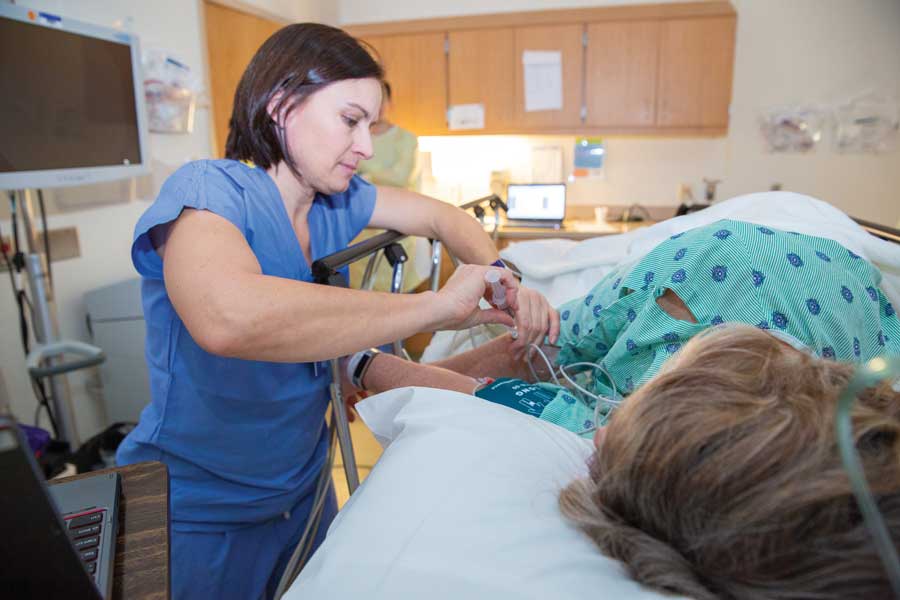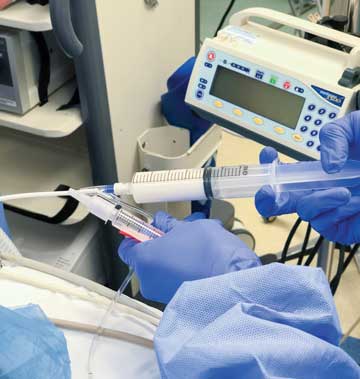After a comprehensive health assessment, we're ready to assign patients to one of these two treatment options:
-
Moderate sedation. For straightforward procedures like an upper endoscopy or colonoscopy, most patients with no serious health issues and normal heart, lung and airway function generally receive endoscopist-directed nurse sedation with midazolam and fentanyl.
The midazolam-fentanyl combination of is a well-established, effective and generally safe approach to mild and moderate sedation during routine upper and lower endoscopy when patients are appropriately monitored. Be sure that specific antagonists of opiates (naloxone) and benzodiazepines (flumazenil) that reverse the sedative effects of midazolam and fentanyl are readily available in every endoscopy unit.
During procedures with light to moderate sedation, we monitor the patient's heart rate, oxygenation level with continuous pulse oximetry, non-invasive blood pressure and concentration of end-tidal CO2 with capnography.
- Deep sedation. Patients with health conditions that make procedures more medically complex or who are scheduled to undergo more involved procedures such as endoscopic retrograde cholangiopancreatography (ERCP) receive anesthesia-directed deep sedation with propofol. Deep sedation might also be required if, for example, multiple biopsies or the anticipated removal of multiple polyps is expected to extend the time of a colonoscopy. In-room anesthesia is provided by CRNAs with oversight by an anesthesiologist, who also attends to patients' post-procedural care.
Propofol is considered by some to be the ideal sedating agent for endoscopic procedures due to its rapid onset, short half-life and easy ability titrate doses to achieve the desired level of sedation. It can be used to achieve mild, medium and deep sedation, and recovery is typically much quicker than with the midazolam-fentanyl combination. Patients who regularly use sedatives and narcotics are often insensitive to standard benzodiazepine sedation and may also benefit from propofol sedation.
For procedures involving deep sedation with propofol, we monitor the patient's heart rate and non-invasive blood pressure, and employ continuous pulse oximetry, continuous ECG and capnography.
Constantly evolving
A team here at the Mayo Clinic regularly reviews indications for sedation levels and improves the triaging of patients to moderate or deep sedation based on procedure type, medical complexity and history of difficult sedations. Everything we do, from the time a patient is first contacted to the last touch before discharge, is designed to make sure all patients receive safe sedation and appropriate care. OSM
.svg?sfvrsn=be606e78_3)


.svg?sfvrsn=56b2f850_5)